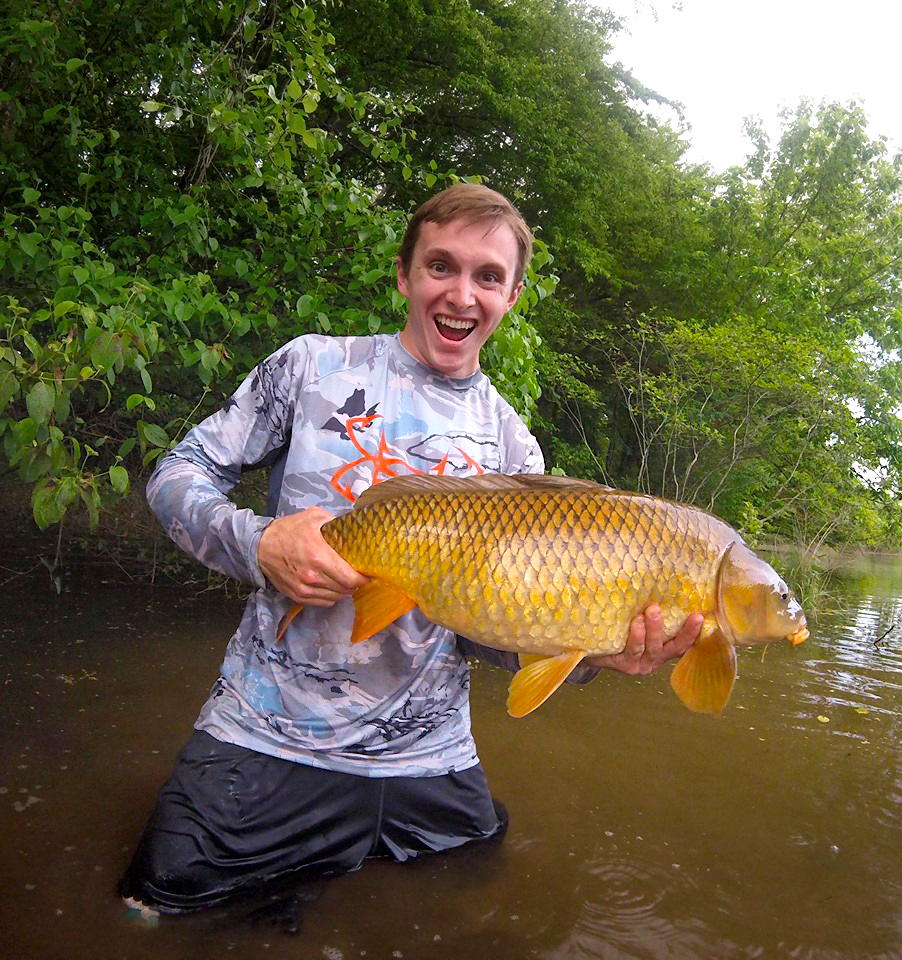Analyzing How Carp Eat Flies
By: Brandon Tourigny
I remember vividly, the first time I saw any fish eat a fly; it was a Red Fish and the encounter was so explosive, that it made a lasting, massive impression on me! I was on a grass island in Jacksonville, Florida trying hard to get the placement of my fly just right… it took some doing but once I got my fly into position, the tailing redfish did everything in its power to eat.
Fast-forward a year later, and I was having a much different experience against a very similar fish.
Carp angling was sold to me as the freshwater equivalent to red-fishing. This intrigued me since I live five hours away from the nearest redfish. It was my boss that first took me out to fly fish for carp and I initially approached my new quarry the same way I had learned to fish for redfish.
I would lead the fish between one and two feet and move the fly into the carp’s view. If you’ve fly fished for carp before you may know this is almost correct, but I was missing one last piece of the puzzle.
In the South, the best carp fishing is found in shallow water flats along rivers and lakes. It is here you’ll find carp tailing through the mud while feeding. In this respect, carp are similar to a redfish or bonefish but what I have rarely seen however, is carp displaying predatory actions. A redfish that is hunting for shrimp and crabs will attack food once it has come into its view. Carp on the other hand look more like street sweepers; a slow-moving force sifting through mud and grass eating any morsel of edible materiel.
This was the piece of the puzzle I was missing on my first carp mission. I expected the fish to spot my fly and attack it. Sometimes I’d be left waiting to feel the carp eat my fly, only to see the fish spook or move on. After three days of fishing I had an epiphany, DON’T MOVE THE FLY. Once the fly is in a carp’s line of sight, let him come to it. This paradigm shift quickly began producing results for me. I would spot the carp I wanted to cast to, get the fly between one and two feet from its face, and then stop moving the fly.
When a carp has decided to eat your fly, its behavior will tell you. First, if you know your fly is in front of the carp, the fish will continue to move in the direction of your fly. Its speed may not change, but as long as the fish hasn’t spooked then you are half way to a hook up. Next thing to look for is if you see its head point into the mud where your fly is. You won’t feel anything, but you are likely to see its tail raise, a puff of mud appears where your fly was, or the carp may just sit over the top of the fly. In extremely clear water you may even see its mouth open. If you see the fish behave in this way, wait five seconds and strip set. The carp likely has eaten your fly.
In review, remember this process to catch carp on the fly:
First, spot the carp and quietly get within casting range. Second, cast the fly about one to two feet in front of the carp and gently pull the fly into the carp’s direct line of sight. Lastly, pause the fly’s movement completely and watch the carp’s movement.
Whatever happens after that, don’t forget the number one rule of fly fishing for carp; you have to have a short-term memory. Carp will hurt your feelings sometimes.
Respectfully, Brandon









